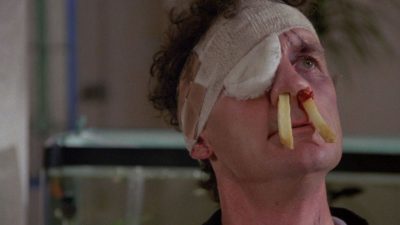The way The Magic Flute unfolds before us is twofold: at first, a fairytale which takes us into the pure poetry of childhood or genius; then – and most of all – a precise, rigorous, and inspired ritual. This combination may seem strange. Let us first observe that it functions perfectly, and that the alternation of scenes – either magical or frankly comical, with a philosophical message of a great loftiness of thought – makes us more permeable to receiving its symbolism, not only with our mind, but with our whole being.
THE DANCE is first of all a ritual. In any traditional civilisation, dance and ritual are inseparable; the priest dances, the sorcerer and the shaman dance, the Pharaoh just as much as David, king and prophet, dance before the image of their divinity. It is through the gesture (MUDRA) that the ritual operates.
Moreover, THE BALLET, as it is understood by our Western civilisation, born at the end of the 18th century, was immediately in its element when it came to fairytale, allegory, the supernatural; and the list of our ballets whose titles overlap those of our fairytales would be long indeed.
This is why it seemed obvious to me, that dancers could convey Mozart’s subtle thought, and that a choreographic score which was delicately interwoven between the lines of music would carry less weight than a simple mise en scène, to translate this double world of fairytale and ritual.

(c) GREGORY BATARDON
It may seem a strange enterprise to dance an opera in its entirety, however: on the one hand (and I have often experienced this), the human voice is the most wonderful prop for dance; on the other hand, the choreographic gesture transcends realism and prolongs the subtle thought of the musical phrase.
When staging The Magic Flute, I did not attempt to slip the smallest personal attention, or added message, into an already perfect work; rather, I sought to listen to the score scrupulously (and lovingly), read the libretto and translate.
People often ask me what the subject of The Magic Flute is. I will end by giving way to a specialist, Jacques Chailley, who analysed this Masonic opera in a magisterial book: “The fundamental subject, as we are now beginning to understand, is the conflict between the sexes: a conflict which finds its conclusion in the mystery of the couple. Man and woman must first seek each other out; then, having found each other, exceed their primary condition by a series of tests which will render them worthy of their new state.”
Maurice Béjart
BÉJART BALLET LAUSANNE
Since its inception in 1987, Béjart Ballet Lausanne is a reference in the choreographic world. Chosen as his successor by Maurice Béjart, Gil Roman is leading the Company and preserving its artistic excellence, since the disappearance of the Master in 2007.
Maurice Béjart always wanted to open the world of the ballet to a larger audience. Animated by the same spirit, Gil Roman and his dancers perform all over the world. Béjart Ballet Lausanne is one of the very few companies able to fill vast spaces such as the NHK Hall of Tokyo, the Kremlin State Palace of Moscow, Odeon of Herodes Atticus in Athens, the Palais des congrès de Paris, Forest National in Brussels or the Patinoire de Malley-Lausanne.
Since 2007, with his search and work for contemporary creation, Gil Roman maintains and develops the repertoire of the Béjart Ballet Lausanne. The work of Maurice Béjart is at the heart of this repertoire, with emblematic choreographies, as The Rite of Spring, Boléro, The Ninth Symphony or Ballet for Life but Gil Roman also wants to present the variety of this repertoire, with Piaf or The Magic Flute for example. Choreographer for 20 years, the artistic director also nourished the repertoire with his own creations. Choreographers like Alonzo King, Tony Fabre, Christophe Garcia, Giorgio Madia, Julio Arozarena or Yuka Oishi also contributed to the creative development of the Béjart Ballet Lausanne.
The Company remains faithful to its vocation: Preserving Maurice Béjart’s work, while remaining a space of creation.
La Flûte enchantée
The Magic Flute
Choreography: Maurice Béjart
Music: Wolfgang Amadeus Mozart – Soundtrack: Philharmonic Orchestra of Berlin, under the direction of Karl Böhm (1964), Polydor
Set and original costumes: from the original plans of Alan Burrett
Costumes design: Henri Davila
Light design: Dominique Roman
Premiere: Cirque Royal, Brussels, 10th of March 1981
Stage again: Espace Odyssée, Lausanne, June 2003 and Beaulieu Theater, Lausanne, June 2017
We thank the Open-Air Theatre for providing us with this article!

























Comments